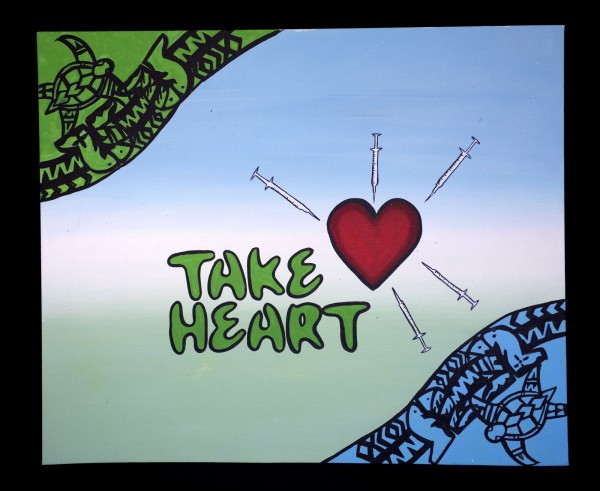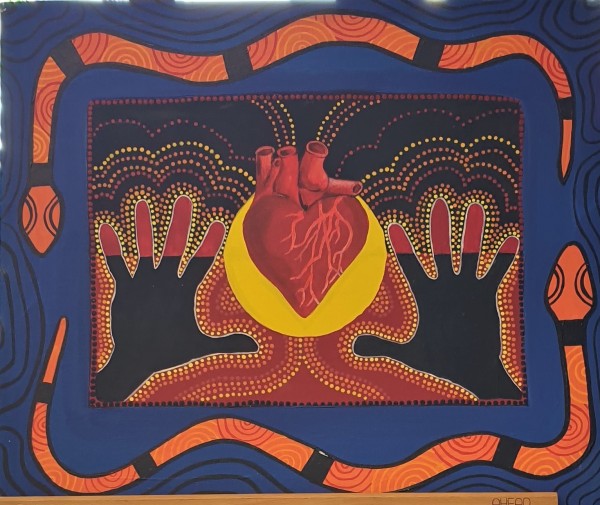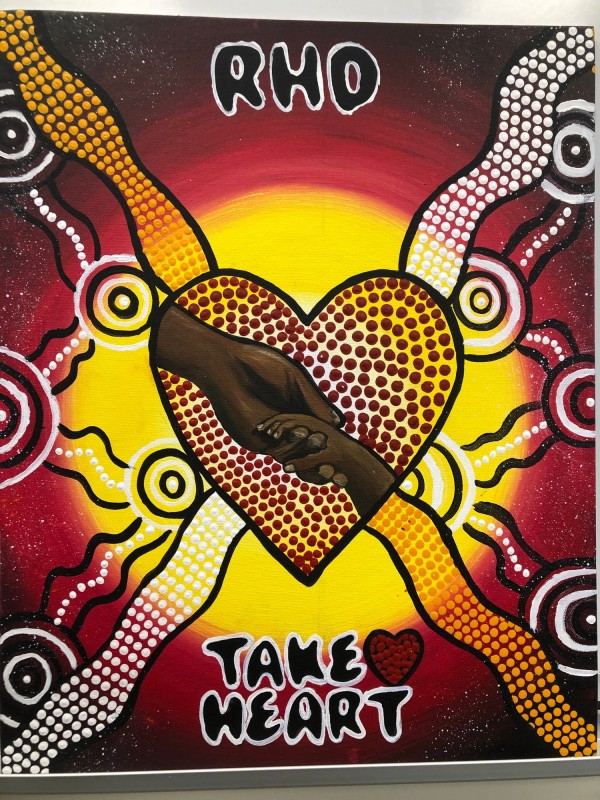Queensland HeART Project
Artwork that reflects the lived experience of acute rheumatic fever and rheumatic heart disease is being displayed at various sites across Queensland in 2020-2021. The HeART project is a collaboration between the Queensland RHD Register and Control Program and northern Queensland correction and detention facilities. Through their art, facility residents are sharing personal stories and educating others about the seriousness of acute rheumatic fever and rheumatic heart disease.

In 2019, staff at the QLD Register and Control Program found that some young residents with ARF and RHD at youth and detention centres were refusing secondary prophylaxis. Some believed that it was not required while they were residing in the facilities. After several unsuccessful attempts to engage this group around the importance of continuing with secondary prophylaxis, RHD Program staff Georgina Hughes and Louise Axford-Haines proposed a health promotion activity based on putting education back into the hands of those living with the disease, through art.
The correction and detention facilities of Stuart (women), Lotus Glen (men), and the Cleveland Youth Centre, were invited to participate in the program with assistance from RHD program staff in Cairns and Townsville.
Facility residents produced paintings based on their experience with, and perception of ARF and RHD, and how they would like to demonstrate their understanding of the disease to others.

The result was more valuable than anticipated. Through art and personal stories, young people encouraged their peers to seek medical assistance and receive their secondary prophylaxis while residing in the facilities. The shame (embarrassment) factor associated with continuing medical care appeared to disappear, and young people who did not have ARF or RHD started requesting a medical review including listening for heart murmurs.
Women and men shared stories about how ARF and RHD, including how populations with high rates of RHD have come to believe that premature death with RHD is normal.
Queensland RHD Program Clinical Nurse Consultant Georgina Hughes said the exhibition aims to raise awareness about ARF and RHD.
“A number of people in correctional and detention facilities are diagnosed with ARF and RHD, so this project is an opportunity to educate and support them in areas that is not well-understood.
“Participants designed an art piece portraying their personal impression of (living with) ARF and RHD, and how this disease has impacted their communities and families,” she said.
The artwork includes a range of themes including RHD and pregnancy and surgery, and many of the pieces are painted in traditional Aboriginal, Torres Strait and Papua New Guinea colours to demonstrate the wide burden of disease in the artists’ communities.

A Women’s Program Officer who enthusiastically supported the project was concerned about ARF and RHD among facility residents and the lack of knowledge in the community. She delivered sessions to corrections staff and executives, to highlight the burden of ARF and RHD among residents; subsequently, the QLD RHD Register and Control Program received requests to deliver education sessions to the Cleveland Youth Detention Centre health staff, teachers, several groups of youth workers and Youth Justice Departments.
Education Queensland and Cleveland Youth Detention Centre backed the project with great enthusiasm, offering art teachers and Indigenous representatives to assist with the program.
Exhibitions have been held at the Townsville Hospital and the Thuringowa Community Library (Townsville). The exhibition will move to Cairns during the week of 26th October where it will feature during a two-day RHD workshop, then there are plans for a public exhibition in Cairns in early 2021. At the end of the project, each piece will be donated to a health or community services organisation of the artist’s choice.
There has also been an expression of interest from the Palm Island Health Centre to establish a similar project with school children early in 2021.

(RHDAustralia thanks the QLD RHD Register and Control Program for providing the information and artwork for this article)
